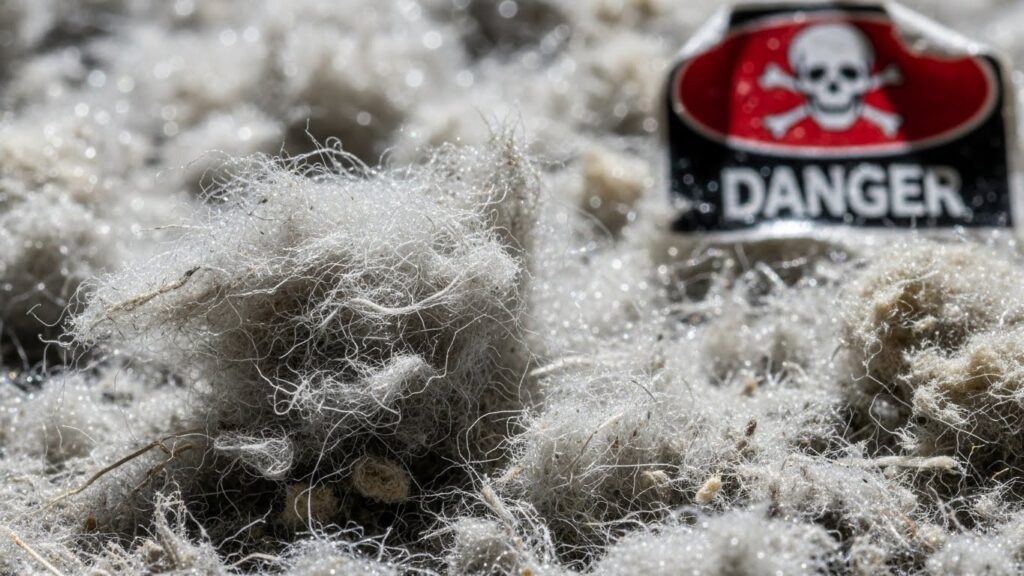Asbestlint, a term that might not be on everyone’s radar, holds significant importance in the realm of construction and health safety. Often found in older buildings, this hazardous material poses serious risks to anyone who comes into contact with it. Understanding what asbestlint is—and how to manage its dangers—can safeguard your well-being and help maintain safe environments.
Whether you’re a homeowner tackling renovations or a professional in the building industry, being informed about asbestlint is essential. Let’s dive into what makes this material so risky and explore how you can effectively identify and deal with it before any harm occurs. Your health should always come first; let’s ensure you’re equipped with the right knowledge to protect yourself and others from potential exposure.
Understanding the Dangers of Asbestlint
Asbestlint poses significant health threats that shouldn’t be overlooked. This material, often found in older buildings, contains asbestos fibers known for their toxicity.
When disturbed, tiny particles can become airborne. Inhalation of these fibers can lead to serious respiratory diseases over time. Conditions such as asbestosis and mesothelioma are direct results of prolonged exposure.
The danger isn’t only immediate; it accumulates silently. Symptoms may take years to manifest, making early detection challenging. Homeowners or workers might unknowingly inhale harmful dust during renovations or repairs.
Moreover, the legal implications of mishandling asbestlint can be severe. Failing to address its presence appropriately could result in hefty fines and liabilities.
Understanding these dangers is crucial for ensuring safety within living and working environments. Awareness leads to proactive measures that protect both individuals and communities from potential harm.
How to Identify Asbestlint
Identifying asbestlint can be a tricky task, especially for the untrained eye. This material often appears in various forms, such as textured coatings or insulation materials.
Look for its distinctive qualities. Asbestlint typically has a fibrous texture and may appear grayish or white. It might crumble easily when disturbed.
Check common areas where it’s found, like attics, basements, or around pipes. If you are renovating old buildings or homes built prior to the 1980s, be extra cautious.
If you suspect the presence of asbestlint but aren’t sure, consider hiring a professional inspector. They have specialized equipment to test materials safely without releasing harmful fibers into the air.
Never attempt to handle suspected asbestlint on your own unless you’re trained and equipped with proper safety gear. Your health should always come first when dealing with potentially hazardous materials.
The Importance of Proper Management and Removal
Proper management and removal of asbestlint is crucial for safeguarding health. This hazardous material poses serious risks when disturbed, releasing fibers into the air that can be inhaled.
A proactive approach ensures safety in homes and workplaces. Regular inspections help identify areas where asbestlint may be present. When found, it requires immediate attention from licensed professionals.
These experts are trained to handle asbestos safely. They follow strict protocols to minimize exposure during removal. Proper containment and disposal techniques prevent contamination of surrounding areas.
Ignoring or mishandling asbestlint can lead to severe legal consequences too. Adhering to regulations protects not only individuals but entire communities from potential harm.
By prioritizing proper management and removal, you create a safer environment for everyone involved, reducing long-term health risks associated with asbestos exposure.
Laws and Regulations Surrounding Asbestlint
Laws and regulations regarding asbestlint are critical in safeguarding public health. Various countries have established stringent guidelines to limit exposure, especially in construction and renovation projects.
In many places, only licensed professionals can handle materials containing asbestos. This is due to the serious health risks associated with improper management. Regulations often require thorough inspections of buildings before any work begins.
Additionally, there are protocols for reporting discovered asbestlint. Property owners must notify local authorities if they find potential asbestos-containing materials during renovations or demolitions.
Penalties for non-compliance can be severe. Fines may be imposed on those who neglect safety measures or fail to follow proper removal procedures. Keeping informed about these laws helps protect not just workers but also families living nearby from hazardous exposure.
Steps for Safe Asbestlint Removal
Before you start any removal process, gather the right tools. You’ll need protective gear, including respirators, gloves, and disposable coveralls.
Seal off the area where asbestlint is present to prevent contamination. Use plastic sheeting to create barriers and minimize airborne fibers.
Dampen the material before removal. This reduces dust and helps keep asbestos particles from spreading into the air.
Carefully remove the asbestlint without breaking it apart. Place all materials in properly labeled bags designed for hazardous waste.
After removing everything, clean up thoroughly using a HEPA vacuum or wet cloths to capture any residual fibers that may have escaped your cleanup efforts.
Consult with local authorities about proper disposal methods for asbestlint waste to ensure compliance with regulations.
Protecting Yourself from Asbestlint Exposure
Protecting yourself from asbestlint exposure is crucial for your health. First, always wear appropriate personal protective equipment (PPE) when working in potentially contaminated areas. This includes masks with high-efficiency particulate air (HEPA) filters, gloves, and coveralls.
Ensure proper ventilation in the workspace. Open windows or use exhaust fans to reduce airborne fibers while you work. Avoid eating or drinking in these areas to minimize ingestion of harmful particles.
If you’re unsure about the presence of asbestlint, hire a professional for testing before starting any renovation projects. Their expertise can help identify risks effectively.
Educating yourself on safe handling practices is vital too. Familiarize yourself with emergency procedures in case of accidental exposure or disturbance of asbestos materials.
Regular health check-ups are essential if you suspect past exposure to asbestlint. Monitoring your health helps catch potential issues early on.
Conclusion
Asbestlint presents significant risks that cannot be overlooked. Understanding its dangers is crucial for anyone involved in construction, renovation, or property management. Awareness of this hazardous material enables better identification and proactive measures.
Proper management and removal are essential to minimize health risks associated with asbestlint exposure. Following established laws and regulations ensures safety not only for workers but also for the community at large.
When dealing with asbestlint, always opt for professional assistance to guarantee safe removal practices. Taking preventive steps will help shield yourself from harmful exposure, thereby promoting a healthier environment.
Staying informed about asbestlint can lead to safer living spaces while fostering a culture of awareness around asbestos-related hazards. It’s vital that we prioritize our health by understanding what lies beneath the surfaces we occupy daily.






